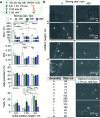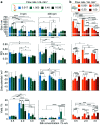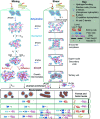Mixing and flow-induced nanoprecipitation for morphology control of silk fibroin self-assembly
- PMID: 35424679
- PMCID: PMC8982335
- DOI: 10.1039/d1ra07764c
Mixing and flow-induced nanoprecipitation for morphology control of silk fibroin self-assembly
Erratum in
-
Correction: Mixing and flow-induced nanoprecipitation for morphology control of silk fibroin self-assembly.RSC Adv. 2022 Sep 7;12(38):25006-25009. doi: 10.1039/d2ra90071h. eCollection 2022 Aug 30. RSC Adv. 2022. PMID: 36199873 Free PMC article.
Abstract
Tuning silk fibroin nanoparticle morphology using nanoprecipitation for bottom-up manufacture is an unexplored field that has the potential to improve particle performance characteristics. The aim of this work was to use both semi-batch bulk mixing and micro-mixing to modulate silk nanoparticle morphology by controlling the supersaturation and shear rate during nanoprecipitation. At flow rates where the shear rate was below the critical shear rate for silk, increasing the concentration of silk in both bulk and micro-mixing processes resulted in particle populations of increased sphericity, lower size, and lower polydispersity index. At high flow rates, where the critical shear rate was exceeded, the increased supersaturation with increasing concentration was counteracted by increased rates of shear-induced assembly. The morphology could be tuned from rod-like to spherical assemblies by increasing supersaturation of the high-shear micro-mixing process, thereby supporting a role for fast mixing in the production of narrow-polydispersity silk nanoparticles. This work provides new insight into the effects of shear during nanoprecipitation and provides a framework for scalable manufacture of spherical and rod-like silk nanoparticles.
This journal is © The Royal Society of Chemistry.
Conflict of interest statement
There are no conflicts to declare.
Figures






References
-
- Konwarh R. Bio-Des. Manuf. 2019;2:278–286. doi: 10.1007/s42242-019-00052-9. - DOI
-
- Lozano-Pérez A. A. Montalbán M. G. Aznar-Cervantes S. D. Cragnolini F. Cenis J. L. Víllora G. J. Appl. Polym. Sci. 2015;132:41702.
LinkOut - more resources
Full Text Sources

